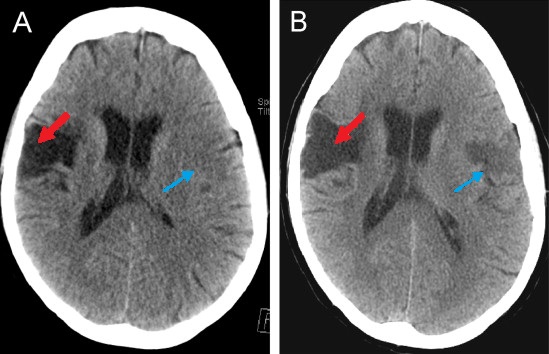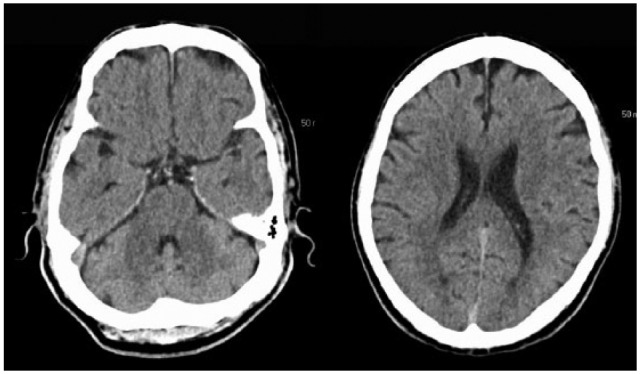Playlist
Show Playlist
Hide Playlist
Acute Ischemic Stroke (AIS – Emergency Medicine)
-
Emergency Medicine Bord Acute Ischemic Stroke.pdf
-
Download Lecture Overview
00:01 Hi. We're gonna be talking about acute ischemic stroke which is essentially a stroke that's caused by a blood clot. 00:08 Thinking about the epidemiology of acute ischemic stroke, it's the fifth leading cause of death. 00:14 And the big thing with ischemic strokes are that they lead to significant disability. 00:19 So after a patient has a stroke, they may not be able to walk or talk or see. 00:24 So this is a really big public health concern and a concern for the patient as well that after they have a stroke they may not be able to go back to doing their activities of daily living or to be able to live independently. 00:37 Now when we're thinking about strokes they're actually divided into two categories. 00:40 Ischemic strokes are strokes that are caused by blood clots and these are by far more common than hemorrhagic strokes. 00:47 Hemorrhagic strokes are strokes that are caused by bleeding, generally into the parenchyma or the tissue of the brain but can also be related to a subarachnoid hemorrhage. 00:57 We'll be talking about those in another lecture. 00:59 But for the purpose of this lecture we're strictly gonna be talking about ischemic stroke and the treatment of ischemic stroke and how to work it up. 01:06 And it's important to note like I said that this is far more common than hemorrhagic stroke. 01:10 Ischemic stroke is more common in African-American and Hispanic patients. 01:15 So when patients come in and they have those risk factors it's something important to keep in mind. 01:21 There are number of etiologies for an ischemic stroke. 01:24 First, there could be a large artery atherosclerosis secondary to hypertension. 01:30 Next, there might be an embolic stroke which can be cardiac in origin as in atrial fibrillation or an infectious embolic as in infective endocarditis or paradoxical emboli as in presence of ASD or patent foramen ovale. 01:45 Another etiology could be a small vessel occlusion primarily due to hypertension and diabetes mellitus. 01:52 And lastly there are other etiologies such as vasculitis, sickle-cell disease or coagulopathies as in polycythemia. 02:01 We're gonna take just a moment to think about the anatomy and how that affects what's going on here. So the anterior circulation supplies 80% of the brain. 02:10 The anterior circulation is what comes off of the Circle of Willis which is the circular structure and goes to the -- basically the front portions of the brain and most of the brain tissue. 02:22 The posterior circulation comes off of the back portion of the Circle of Willis and that supplies about 20% of the brain. 02:30 So that supplies a smaller portion of the brain and we'll go through and we'll talk about what different areas these supply. 02:37 So the anterior circulation supplies the optic nerve and the retina. 02:41 The fronto and parietal lobes and the anterior temporal lobe. 02:45 It's important that we remember that and think about that cuz when we're thinking about the symptoms that patients present with and helping to identify the vessel or where that blood clot is located knowing what areas of the brain are supplied by that vessel are important. 03:01 The posterior circulation supplies the brainstem. 03:05 The cerebellum, the medial temporal lobe and the auditory and vestibular centers of the ear. 03:13 There is something called a transient ischemic attack, also known as a TIA. 03:18 What a TIA is is it's a transient episode of neurologic dysfunction. 03:23 The key thing here is that there is no evidence of infarction on neuroimaging. 03:28 Historically, TIA was thought of to be stroke symptoms that lasted for less than 24 hours but most recently the definition has changed and the defining factor is that there is no evidence of infarction on neuroimaging. 03:42 Now, why do we care? Right? Because essentially what's gonna happen is these patients are gonna come to the emergency department. 03:49 They're gonna describe some kind of stroke symptoms, either they had some weakness or some sensory issues, difficulty with their speech potentially or their gait. 03:58 And by the time generally that they get to the emergency department their symptoms may be totally improved if not somewhat better. 04:05 The reason that we care about this and that we wanna make sure we're thinking critically when patients present with these symptoms is that they're a warning sign for development of future stroke. 04:15 So what that basically means is when patients have a TIA, 10% of those patients will experience a stroke in the next three months. 04:23 And half of those take place in the first two days. 04:26 So basically by identifying who's had a TIA even though they can come in and can be relatively asymptomatic, we're identifying those people who are at greatest risk of stroke. So when someone comes in to the hospital with a TIA or with symptoms concerning for TIA, our goal is to think critically about those patients. 04:46 Depending on where you're practicing emergency medicine, some of those patients may actually get admitted to the hospital to get an expedited workup for stroke symptoms. 04:55 So what that might mean is they might get an echocardiogram of their heart to take a look and see if the heart is beating regularly to see if there's any hole in the heart that could predispose those patients to getting a blood clot to their brain. 05:16 Or the other thing that may take place is they may get a Doppler of their carotid vessels cuz we know that if patients have a significant amount of atherosclerosis in their carotid vessels that those patients may benefit from getting procedures done to their carotid vessels to decrease stroke risk. So some of these patients may need to be admitted to the hospital to get it or depending on what hospital system you're working in and what resources your patients may have access to. 05:44 Those patients may actually be able to be discharged and get that expedited workup as an outpatient. 05:51 Moving along to acute ischemic stroke, older age is generally a risk factor. 05:57 But, 3 to 4% of strokes occur in younger patients. 06:02 Those are patients who are between the ages of 15 to 45 years of age. 06:06 Now, the reason that we -- I wanna make sure that we bring this up and that we talk about that is you wanna make sure you're not overlooking stroke symptoms in patients who are in those younger age groups because often times stroke symptoms are clear-cut but sometimes stroke symptoms may be a little bit more vague and not as clear-cut as others. 06:26 So for those younger patients we wanna think about the risk factors that can predispose them to having strokes at a younger age. 06:33 So the risk factors are pregnancy. 06:35 Pregnancy is a risk factor cuz it has an increased tendency to clotting in the setting of pregnancy. 06:41 One of the classic things that you wanna think about in pregnancy is a central venous thrombosis. 06:47 Protein C and S deficiency are disorders which predispose patients to clotting. 06:53 So if someone has a known history of that that's something that you wanna make sure you think about. 06:57 And if someone presents with stroke symptoms and they get admitted to the hospital, testing might be done to evaluate for protein C and S deficiency. 07:05 Sickle-cell anemia predisposes patients to strokes cuz the blood cells are stickier. 07:10 And when the blood cell stick together they could potentially form a clot. 07:14 And then drug use is the last thing. 07:16 And drug use can sometimes cause stroke due to the fact that if a patient uses dirty needles, and they can get septic emboli which are basically blood clots that are related to infection.
About the Lecture
The lecture Acute Ischemic Stroke (AIS – Emergency Medicine) by Sharon Bord, MD is from the course Neurologic and Psychiatric Emergencies. It contains the following chapters:
- Acute Ischemic Stroke
- Transient Ischemic Attack (TIA)
Included Quiz Questions
Which of the following statements regarding ischemic stroke is LEAST accurate?
- It rarely leads to significant disability.
- It constitutes approximately 87% of all strokes.
- It is more common in blacks and Hispanics than in whites.
- It is generally less severe than hemorrhagic stroke.
- It is a common cause of death worldwide.
Which of the following structures are NOT supplied by the posterior circulation?
- Retina
- Brainstem
- Cerebellum
- Medial temporal lobe
- Vestibular sensors of the ear
Which of the following regarding a transient ischemic attack (TIA) is TRUE?
- Neuroimaging is less likely to show evidence of ischemia in TIA than in stroke.
- It rarely reoccurs.
- It is asymptomatic.
- It indicates a benign neurochemical change in the brain due to hyponatremia.
- It is diagnosed in patients with a transient episode of memory impairment.
Which of the following is LEAST likely to increase the risk of stroke in young patients?
- Iron deficiency anemia
- Fibromuscular dysplasia
- Protein C and S deficiency
- Sickle cell anemia
- Drug abuse
Customer reviews
5,0 of 5 stars
| 5 Stars |
|
5 |
| 4 Stars |
|
0 |
| 3 Stars |
|
0 |
| 2 Stars |
|
0 |
| 1 Star |
|
0 |





